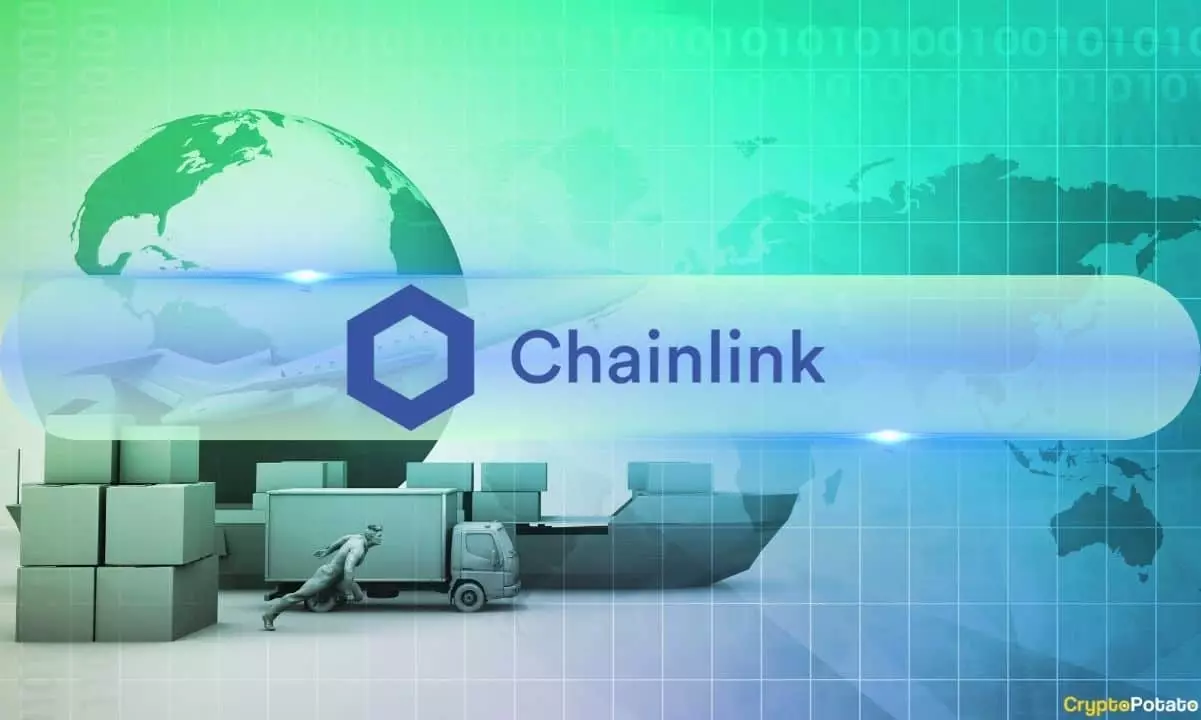The recent announcement of Chainlink’s Data Streams bringing tokenized US equities and ETFs to blockchain platforms might seem like a groundbreaking step toward bridging traditional finance (TradFi) and DeFi. However, beneath this shiny veneer lies a series of overestimated expectations and overlooked obstacles. The narrative of a seamless integration between these worlds is fundamentally flawed. While the technology appears sophisticated—offering real-time prices, high-frequency updates, and multi-source reliability—the reality is that these innovations cannot or will not fully address the complex, regulatory, and infrastructural hurdles that tether traditional markets to blockchain networks.
Traditional finance isn’t just about data; it’s a dense web of legal frameworks, legacy systems, and cautious institutions reluctant to cede control. As much as blockchain proponents hype the potential for 24/7 trading and frictionless tokenized assets, they often neglect the deep-rooted institutional inertia, compliance requirements, and governance issues that dominate the financial ecosystem. Technology alone cannot reconcile these deep structural differences, no matter how advanced the Data Streams are marketed to be.
The Overstated Credibility of Data Reliability
Chainlink’s promise to aggregate multiple data sources and provide structured, timestamped market data also exudes optimism that fails to acknowledge the fragility of oracles and data integrity in practice. While decentralization and redundancy mitigate some risks, they don’t eliminate the core issues of manipulation, misreporting, or latency. For instance, traditional exchanges have significant control over their data feeds and can, intentionally or otherwise, create discrepancies—especially during turbulent market conditions. Claiming that these issues will be resolved simply by integrating multiple sources doesn’t fully solve the core problem: how do we ensure that on-chain prices always reflect real-world conditions without being vulnerable to spoofing or interference?
Moreover, the reliance on high-frequency data feeds to facilitate derivatives, perpetuals, and synthetic ETFs is ambitious but also dangerous. In volatile markets, even minor latency discrepancies or data inaccuracies can lead to cascading liquidation failures, triggering losses that could far exceed what the current narrative suggests. The assumption that advanced schema and timestamping will prevent these issues seems more like wishful thinking than a guarantee. Excessive reliance on automated risk management routines might give false confidence that the system can handle unpredictable market shocks convincingly.
The False Expectation of Regulatory Neutrality
Perhaps the most significant flaw in this narrative is the presumption that tokenized equities and ETFs, integrated into blockchain systems, will naturally circumvent regulatory complications. This is a dangerous oversimplification. Regulatory frameworks are still catching up with crypto innovations, and the idea that these tokenized assets can seamlessly be used for compliance-insecure trading, lending, or derivatives assumes away the extensive legal scrutiny they will inevitably face.
Furthermore, many institutional actors are deeply wary of regulatory crackdowns, and rightfully so. Launching tokenized stocks on blockchain infrastructure is not just a technological upgrade; it’s a political and legal challenge. Governments and regulators may impose restrictions, trading halts, or licensing requirements that disrupt the supposed 24/7, always-on promise. The hype around Data Streams and high-fidelity data feeds may inadvertently foster overconfidence, making DeFi protocols and developers less cautious about the regulatory landscape—an attitude that risks turning a promising technological upgrade into a regulatory headwind.
The Illusory Leap Toward Fully Decentralized Markets
While proponents celebrate the use of decentralized oracle networks (DONs) to improve uptime and reliability, the ambitious goal of fully decentralized, trustless access to traditional assets remains distant. Trusted third parties, regulation, and centralized exchange data still underpin much of the traditional finance infrastructure that these new blockchain projects aim to replace or supplement. This disconnect raises questions about whether true decentralization is possible or desirable in the context of highly regulated assets like stocks and ETFs.
The idea that an oracle network can replace the central role of established exchanges is, at best, a hopeful aspiration—at worst, a dangerous oversell. Market manipulation, information asymmetry, and systemic risks are baked into the structure of traditional finance; simply digitizing and decentralizing data feeds does not eliminate these foundational issues.
The Real Impact: A Controlled Experiment in Overhyping Tech
In essence, the entire narrative around Chainlink’s Data Streams and the tokenization of traditional assets on blockchain is a reflection of an industry eager for validation. It’s a controlled experiment that overhypes technological capabilities without sufficiently grappling with the economic, legal, and infrastructural barriers. If history has taught us anything about disruptive innovation, it’s that technological advancements are necessary but not sufficient for systemic change—especially when entrenched interests and systemic complexities are involved.
The optimism surrounding this development underscores a broader tendency in the crypto space: to project future potential as imminent reality, often glossing over the nuances and challenges that lie ahead. Tokenized equities might become more accessible, but claiming they will revolutionize traditional markets overlooks the long and often winding road to genuine integration. With the regulatory landscape still undefined and technical risks remaining high, it’s prudent to view these advancements as incremental rather than transformative, with much of the hype serving more as a marketing tool than a guarantee of future success.

